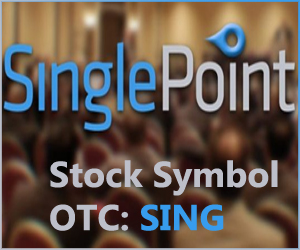California Cannabis Advertising: Changes Coming?
CaliforniaRecreational MarijuanaUncategorized August 27, 2018 MJ Shareholders


It’s been a while since we wrote about advertising regulations in California, in large part because the regulations have been a moving target. But with AB 2899 making steady progress, we thought it would be a good time to give a rundown of current Medicinal and Adult Use Cannabis Regulation and Safety Act (“MAUCRSA”) advertising regulations, and what AB 2899 would do to change them.
Currently, Section 26151 of the Business and Professions Code states as follows regarding cannabis advertising:
(a)(1) All advertisements and marketing shall accurately and legibly identify the licensee responsible for its content, by adding, at a minimum, the licensee’s license number.
(2) A technology platform shall not display an advertisement by a licensee on an Internet Web page unless the advertisement displays the license number of the licensee.
(3) An outdoor advertising company subject to the Outdoor Advertising Act (Chapter 2 (commencing with Section 5200) of Division 3) shall not display an advertisement by a licensee unless the advertisement displays the license number of the licensee.
(b) Any advertising or marketing placed in broadcast, cable, radio, print, and digital communications shall only be displayed where at least 71.6 percent of the audience is reasonably expected to be 21 years of age or older, as determined by reliable, up-to-date audience composition data.
(c) Any advertising or marketing involving direct, individualized communication or dialogue controlled by the licensee shall utilize a method of age affirmation to verify that the recipient is 21 years of age or older before engaging in that communication or dialogue controlled by the licensee. For purposes of this section, that method of age affirmation may include user confirmation, birth date disclosure, or other similar registration method.
(d) All advertising shall be truthful and appropriately substantiated.
And Section 26152 states that a licensee (or third-party advertising on behalf of a licensee) shall not do any of the following:
(a) Advertise or market in a manner that is false or untrue in any material particular, or that, irrespective of falsity, directly, or by ambiguity, omission, or inference, or by the addition of irrelevant, scientific, or technical matter, tends to create a misleading impression.
(b) Publish or disseminate advertising or marketing containing any statement concerning a brand or product that is inconsistent with any statement on the labeling thereof.
(c) Publish or disseminate advertising or marketing containing any statement, design, device, or representation which tends to create the impression that the cannabis originated in a particular place or region, unless the label of the advertised product bears an appellation of origin, and such appellation of origin appears in the advertisement.
(d) Advertise or market on a billboard or similar advertising device located on an Interstate Highway or on a State Highway which crosses the California border.
(e) Advertise or market cannabis or cannabis products in a manner intended to encourage persons under 21 years of age to consume cannabis or cannabis products.
(f) Publish or disseminate advertising or marketing that is attractive to children.
(g) Advertise or market cannabis or cannabis products on an advertising sign within 1,000 feet of a day care center, school providing instruction in kindergarten or any grades 1 through 12, playground, or youth center.
The key with these rules is that all advertising must be tied to a specific licensee and must include that licensee’s license number. So, in the case of a non-licensed third-party looking to advertise a cannabis brand, that company would need to be working with a licensed manufacturer, for example, in publishing those advertisements, and the licensed manufacturer would need to be involved in the advertising such that its identification on the advertisement does not render it false and misleading.
Under AB 2899, the legislature is proposing to do away with the cumbersome requirement that a license number must be included with each advertisement. This would make it much easier for third-parties–including, for example, out-of-state brand licensors–to advertise their products in California, even without a license of their own. Rather than requiring a license number attached to each advertisement, the new legislation states that it would “prohibit a licensee from publishing or disseminating advertisements or marketing of cannabis and cannabis products while the licensee’s license is suspended.” That makes sense to us.
Of course, in addition to state advertising requirements, cannabis licensees should make sure that any outdoor advertising complies with applicable local law. Some local jurisdictions further limit the placement of billboards or signage, or may have other related restrictions. Businesses need to be mindful of that.
We’ll be monitoring AB 2899 closely, as it could give many of our cannabis intellectual property licensing clients more flexibility in how they address the delegation of marketing responsibilities in their licensing agreements. Stay tuned!
MJ Shareholders
MJShareholders.com is the largest dedicated financial network and leading corporate communications firm serving the legal cannabis industry. Our network aims to connect public marijuana companies with these focused cannabis audiences across the US and Canada that are critical for growth: Short and long term cannabis investors Active funding sources Mainstream media Business leaders Cannabis consumers









